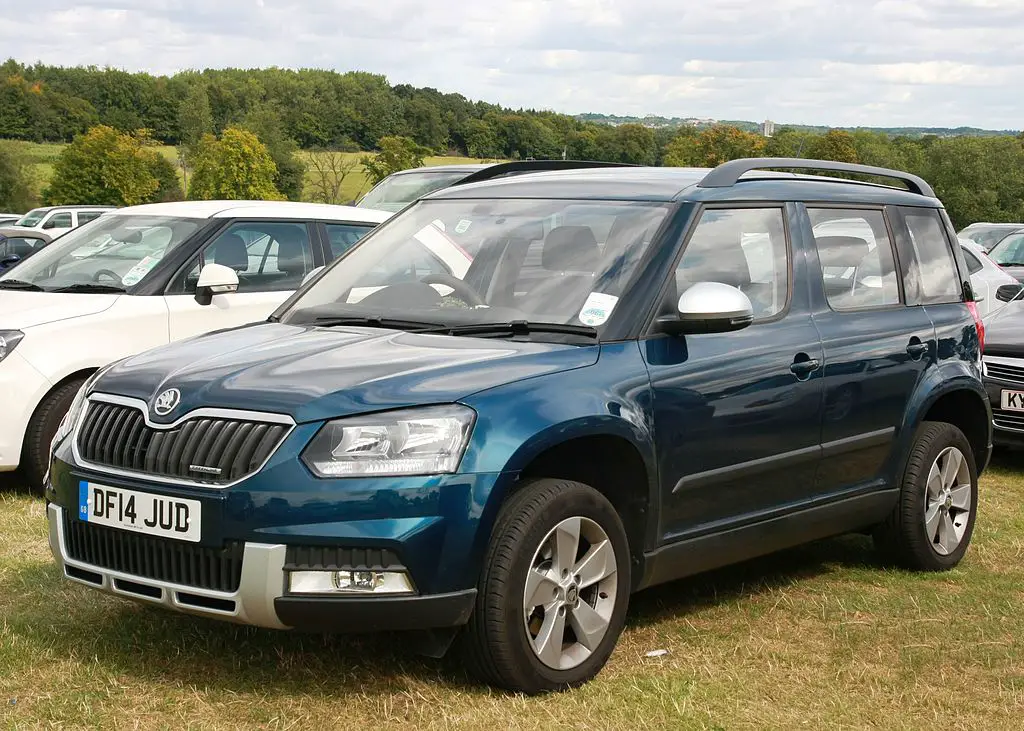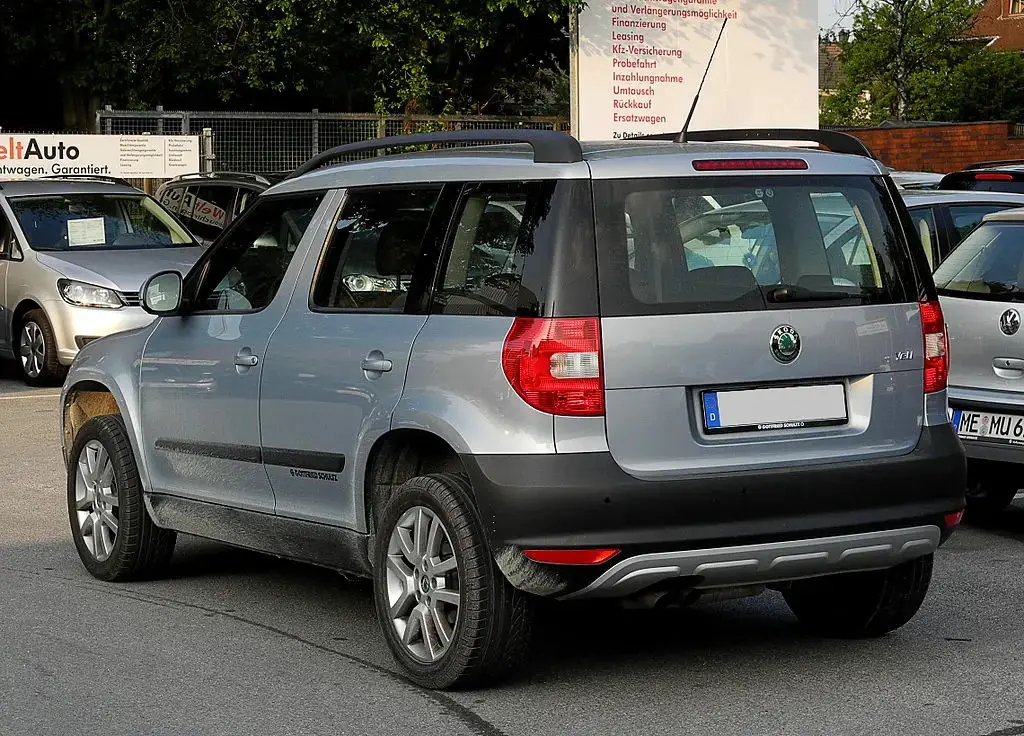Review: Skoda Yeti (2009 – 2017)

Despite being a slightly overlooked car, the Skoda Yeti is the best 4×4 you’ve never heard of. It remains only for you to decide whether its looks convinces you or not.
Launched in 2009 as the successor to the Roomster, the Skoda Yeti was an electric shock to the car world. Surely when you look at the Skoda Yeti you don’t think of it as a rival to the Qashqai or the Rav4 or that it’s actually a Skoda Tiguan. And that’s in the moments when you can look at it. Although I don’t quite understand why there’s so much hate for the Skoda Yeti as if it were Amy Schumer and personally I like the Yeti and I even see it as a small utility SUV rather than an tarmac crossover.
And that’s because you really need the love of a mother to look it at and buy it in favor of it’s predecessor Skoda Roomster. It’s a practical car, it’s more than enough for most people’s ideea of off-roading, and it’s also reasonably reliable. Seriously now, a Yeti 2.0 TDI 4×4 manual could be all the crossover you need, you just have to stop being a true chav and leave snobbery aside because your rear end is too expensive for a Skoda.

Skoda Yeti Engines
Petrol
- 1.2 TSI EA111 of 105 and 110 horsepower – By far the weakest engine on the Skoda Yeti and one of VW’s worst engines altogether. It neither runs well, nor is it reliable, nor is it economical. Having this engine is like having someone constantly whispering in your ear reminding you of the mistake you made.
- 1.4 TSI EA111 and EA211 of 122, 125, and 150 horsepower – We’ll discuss these TSI engines in general issues as well, so I’ll just say that the 150 horsepower 1.4 TSI is the most balanced engine on the Yeti and the best city engine.
- 1.6 MPI EA211 of 110 horsepower – The only naturally aspirated engine on the list, a relic from another era and quite reliable but rather hard to find. It only needs coil packs and sometimes it may burn oil, but nothing spectacular.
- 1.8 TSI EA888 of 150 and 160 horsepower – If the 1.2 TSI is a weak engine in terms of reliability, wait until you see the 1.8 TSI. However, you won’t see the 1.8 TSI on the Skoda Yeti. It’s like putting John Goodman in the Olympic Games in the 800-meter race and giving him a real chance of winning.
Diesel
- 1.6 TDI EA189 of 105 horsepower – By far the most popular engine on the Skoda Yeti and beyond, this engine can be absolutely decent or it can be a mechanical failure. The issue is that it’s a decent engine externally but very weak in the city. Oh, and the EGR valve doesn’t clean, it just gets replaced, along with the DPF, injectors, flywheel, and others. So keep it away from the city.
- 2.0 TDI EA189 and EA288 of 110, 140, 150, and 170 horsepower – The village’s bicycle, the 2.0 TDI. From Passat to Golf to Tiguan to Octavia to A6, they would mount the 2.0 TDI even on the Q7 if they could. Otherwise, it has the same issues as the 1.6 TDI, except it’s more resilient and won’t break down AS often.

Skoda Yeti Reliability Issues
- I’ll start with the TSI engines, namely that TSI engines have oil consumption issues. Which is all of them. And then you have the TSI engines with timing chain that needs replacing every 3rd engine start. VW rectified the issue and switched to timing belt, anywhere between 2013 and 2015 because they officially declared it in 2013 but there are still 2014 models with timing chain so make sure to ask about it.
- The DSG automatic gearbox is a permanent guest on the mechanic’s ti-do list due to its well-known reliability issues. So all you can do is change the oil every 37,000 miles / 60,000 kms (for those with wet clutches) and pray that the Mechatronic unit won’t fail too soon. Because the Mechatronic unit fails even on DSGs with dry clutches.
- The radiator is mounted low and can catch stones in front, and that’s a real issue for which you can’t do anything except get a grille with smaller slots.
- The paint swells around the plastic door handles.
- Among Skoda Yeti owners, some snobs ticked the panoramic roof as an option. And because we don’t tolerate people who are wealthier than us, water seeps through the panoramic roof and leaves you with a puddle at your feet.
- The air conditioning compressor runs out of air as if it’s hooked on Ventolin, and when it inevitably dies, you’ll be left without air.

Skoda Yeti Verdict
This car was supposed to go head-to-head with the Qashqai and the Rav4, but it seems it was more of a rival for the Tiguan. But fortunately for the Tiguan, no one bought the Skoda Yeti because it was too ugly. But if appearance doesn’t matter to you or it’s not that ugly (for me, it isn’t), then you possibly have the best undercover 4×4 crossover, both in terms of reliability and what it can do.
Which engines do I recommend? Clearly, the belt-driven 1.4 TSI with 150 horsepower for petrol, and for diesel, the 110 horsepower 2.0 TDI for diesel.
Similar Articles

Review : Skoda CitiGO ( 2011 - 2020 )

Review : Seat Mii ( 2011 - 2020 )

Review : VW Up! ( 2011 - 2023 )
Write an answer
- Review : Skoda CitiGO ( 2011 - 2020 ) 02 August 2025
- Review : Seat Mii ( 2011 - 2020 ) 02 August 2025
- Review : VW Up! ( 2011 - 2023 ) 16 July 2025
- November 2025
- October 2025
- August 2025
- July 2025
- April 2025
- March 2025
- February 2025
- January 2025
- December 2024
- November 2024
- October 2024
- August 2024
- July 2024
- June 2024
- May 2024
- April 2024
- March 2024
- February 2024
- January 2024
- December 2023
- November 2023
- October 2023
- September 2023
- August 2023
- July 2023
- June 2023
- May 2023
- April 2023
- March 2023
- February 2023
- January 2023
- December 2022
- November 2022
- October 2022
- September 2022
- August 2022
- July 2022
- June 2022
- May 2022
- March 2022
- April 2021
- January 2021
- December 2020
- November 2020
- October 2020
- September 2020
- August 2020
- July 2020
- March 2020